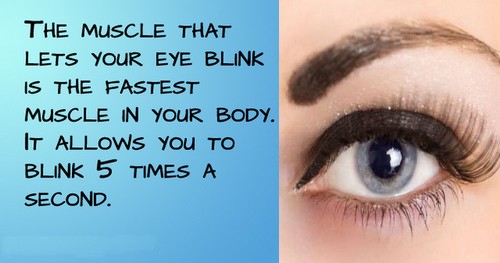Each and every part of our body is significant to perform its specific functions. The human eye is a strong body part, consisting of millions of cells and countless veins and arteries. It is difficult for us to completely understand the anatomy of the human eye, this is of course a matter involving lots of biological processes. Only the health care professionals are able to understand how actually the human eyes work and what kinds of functions and anatomical changes they undergo. Here are some interesting and wonderful facts we all love to know about human eyes.
The Amazing, Fun & Interesting Facts About Human Eyes:
Multipart Body Organs
Just like other parts of the body, our eyes are astonishingly multipart organs. This means their number of cells, veins and arteries are impossible to count. God has made the human eyes naturally in a way that scientists also surprise of its facts and truths. The sophisticate biological processes of the eyes enable us to watch the things, but what actually vision is we never came to know.
One of the most powerful organs
Our eyes can utilize as much power as the brain and heart can. It means eyes are among the most powerful body organs. If we call them to be the 2nd powerful organ after the human brain, then that won’t be wrong. The human eyes are able to developed about 35000 bits of visionary information in the form of messages sent to the brain and received from it.
Work day and night
This is a common belief that the brain works 24/7, but let me here tell you that the eyes do the same. Even during the sleeping hours we think that eyes are also sleeping but it is actually not so. The cells of the eyes keep on working all the time. Eyes never sleep and don’t take rest, even when you dream during the night they still are functioning in one way or the other.
Weight of the eyes
The weight of the eyes is estimated to be 27 grams. This is difficult to weigh the eyes of every human being, but this is an average weight. Eyes are among the crucial yet light weight body organs. The eyeballs alone weigh only 17 grams and the rest of the weight is of upper eyes’ portion and the hairs present on them.
Automatic adjustments of the eyes
It is wonderful to know that the eyes are the one and only body organs which adjust themselves automatically without the involvement of brain’s messages. Usually the other body parts, in severe winter and summer conditions, are unable to adjust themselves properly without the instructions of the brain. But the human eyes’ pupil changes in size as per the bright and dim light. This whole process takes nanoseconds so no instructions from the brain are needed at all.
Cornea has no blood vessels
What an amazing and interesting fact that the cornea of the eyes is the only part of the human body which has no blood vessels. This has now been proved by the scientists that cornea doesn’t need the blood to function and regulate its working. It works naturally with the instructions received from brain and never gets dry without blood as all other body parts.
Size of the eyes
The standard size of a human eye is about 1.2 inch in diameter. Usually the eyes expand or shrink from this natural size if they are under the conditions of brightness and dimness of the light. This happens occasionally that the eye leaves its original diameter and shrinks or expands but wherever there is too much or too less light, they will certainly change in the size.
Muscles of the eyes
The human eyes are worth to have the strongest and most powerful muscles. None other body part has as strong and powerful muscles as the eyes have. Even the brain and heart muscles are not that much effective and powerful. It is considered that the muscles of the eyes are 70 times stronger than the muscles of the human brain. These muscles expand as per the light frequency to change the visionary levels of the eyes and to keep them protected from the external conditions of the environment.
No transplants and blinks
The human eyes have absolutely no blinks and transplants. It is impossible for the eyes specialists to transplant the visionary nerve and optic nerve of the eyes. What they can do is to change the eyeballs and perform its transplant. It seems to be never possible for the health professionals to consider the transplant of retinal cells and cornea because these are the body organs which don’t match in any two individuals in the world. This phenomenon is just like having different finger prints. The cells of the cornea keep on changing and dead cells are removed by the natural biological processes, but this never harms you at all.



